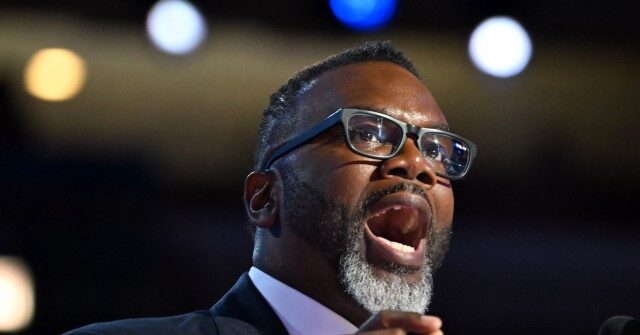In Mayor Brandon Johnson’s Chicago, violence continues to mar the streets, with at least 12 people shot between Friday and Saturday night, one of whom succumbed to his injuries. Local reports confirm that the fatality involved a 68-year-old man shot multiple times early Saturday morning on South May Street. A witness recounted hearing gunfire and discovering the elderly man lying unresponsive on the ground. This incident highlights the ongoing struggle with gun violence in the city, underscoring disturbing trends in public safety and community well-being.
The troubles plaguing Chicago are not isolated events. A stark comparison arises when looking at the preceding weekend, where a total of 16 individuals suffered gunshot wounds, resulting in two deaths. The increasing frequency of gun violence raises concerns about the efficacy of law enforcement and community initiatives to mitigate crime. Just earlier in the week, a particularly heinous act of violence occurred when 36-year-old Raylon East reportedly used a 9mm handgun to kill two former coworkers at Navy Pier—an area known for its family-friendly entertainment. This incident followed East’s termination from his job, illustrating a troubling narrative of personal grievances escalating to lethal outcomes.
Statistics paint a grim picture of violence in the city, with reports indicating that 493 individuals have been killed in Chicago as of 2024. This figure serves as a chilling reminder of the persistent issue of gun-related killings and the broader implications for public safety in urban environments. The repercussions of such violence extend beyond mere numbers; they erode the fabric of communities and instill fear among residents, complicating the relationship between law enforcement and the public.
Amidst this backdrop, various voices express their concerns and insights. AWR Hawkins, a prominent Second Amendment columnist and political analyst for Breitbart News, has contributed to discussions surrounding gun rights and regulations. With a Ph.D. in Military History and a background that includes serving as a Visiting Fellow at the Russell Kirk Center for Cultural Renewal, Hawkins provides a perspective that emphasizes the complexities of gun legislation and the ongoing debates surrounding personal safety and constitutional rights. Such discussions are increasingly relevant in the context of rising gun violence.
The situation in Chicago raises critical questions about the intersections of gun control and individual rights. Proponents of Second Amendment rights argue for the necessity of self-defense mechanisms in dangerous neighborhoods, while opponents highlight the need for stricter regulations to curb violence. The narrative surrounding gun usage in urban areas continues to evolve, influenced by high-profile incidents and public sentiment. The debate is further fueled by media coverage, which often sensationalizes violent acts, intensifying calls for action.
In conclusion, the violence in Chicago represents a multifaceted issue that demands comprehensive attention from policymakers, law enforcement, and community leaders. The alarming trends in gun violence not only endanger lives but also create an environment of fear and mistrust among citizens. As the numbers continue to rise, the urgency for dialogue and effective strategies becomes increasingly critical. Navigating the complexities of gun rights, public safety, and community health will require collaboration and a nuanced understanding of the underlying issues fueling this cycle of violence.

